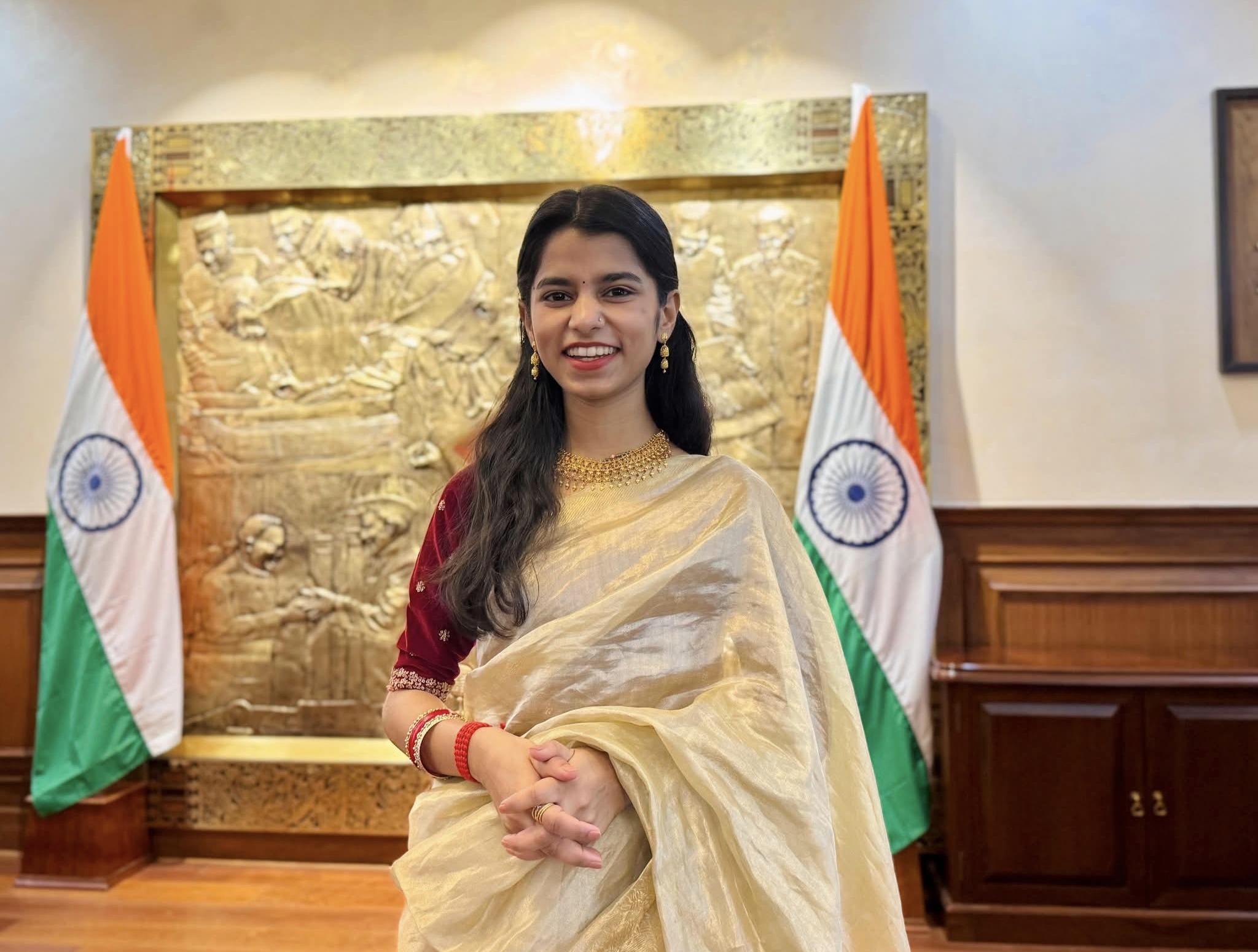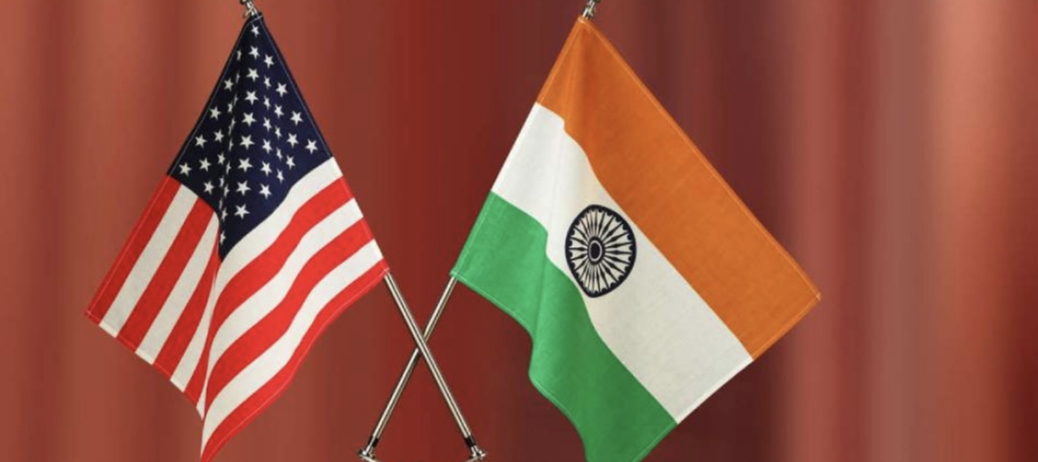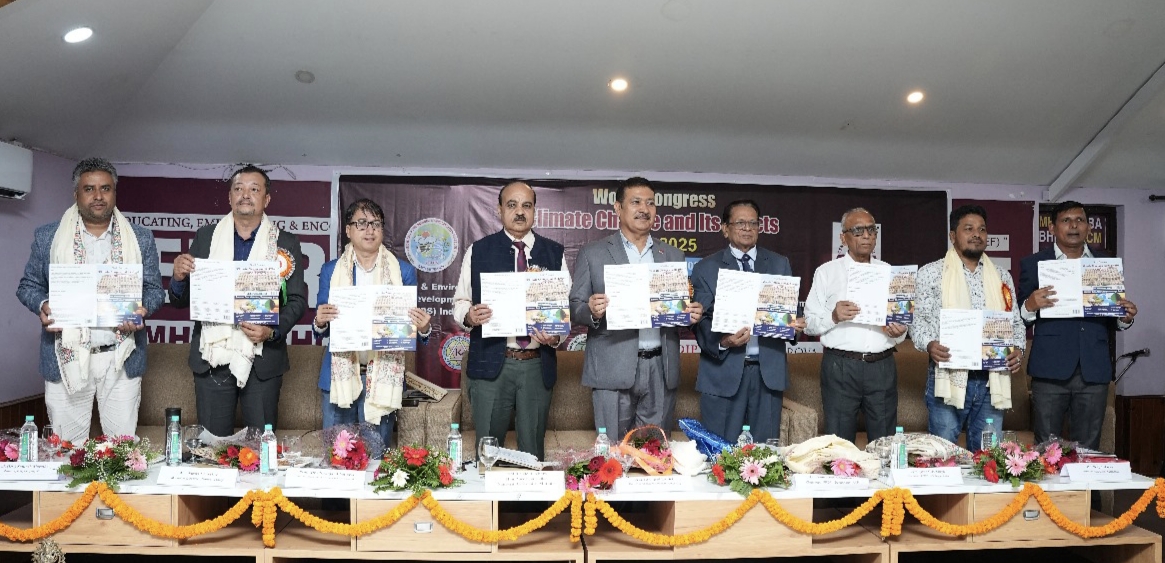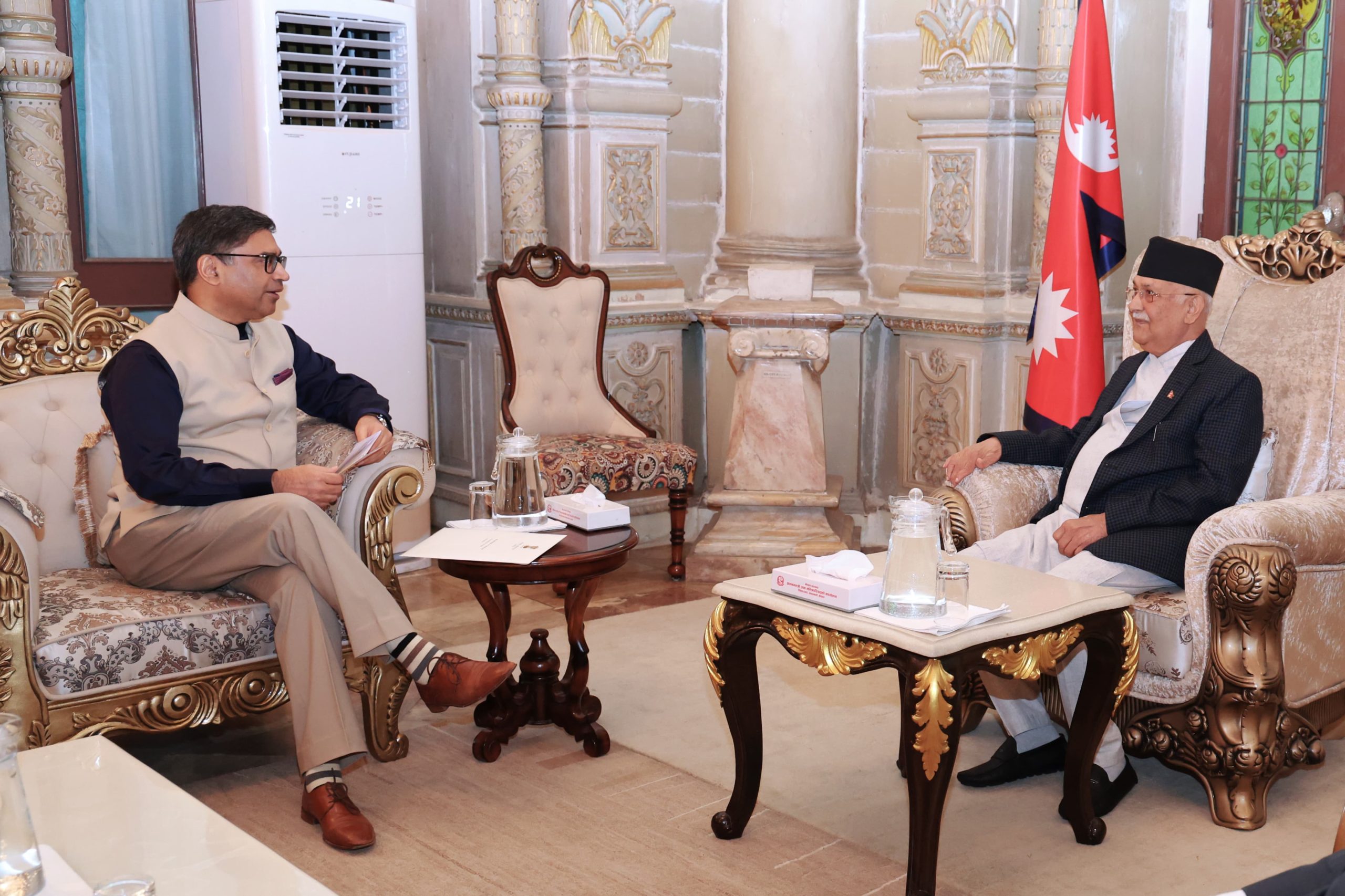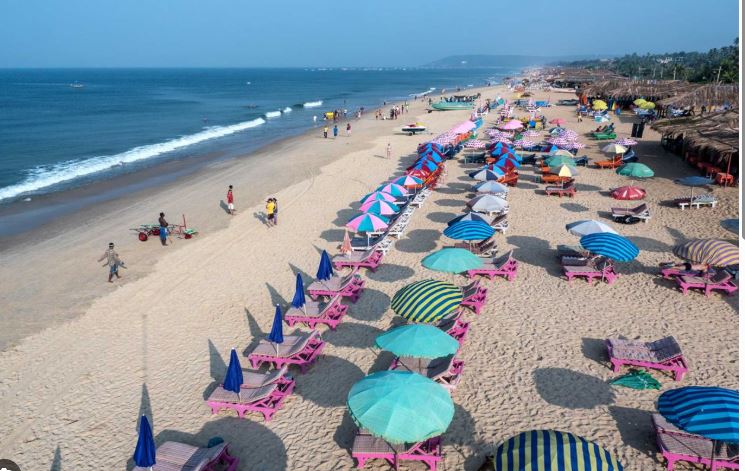On 12 November 2016, when the visiting Indian Army Chief Dalbir Singh Suhag met Prime Minsiter Pushpa Kamal Dahal, he reminded Dahal of India’s thirteen year old proposal to set up a Pension Paying Office (PPO) at Butwal. Suhag’s reminder came close on heels after the Indian President Pranab Mukherjee raised the issue during his state visit to Nepal.
For a seemingly ordinary issue of setting up a pension camp, the persistent Indian nudging was extraordinary. This might sound like an ordinary request from India. But this nudging to allow a PPO in Butwal has been going on for 13 years now. During the 24th annual meeting of Indian Ex-Servicemen Welfare Organisation in Nepal (IEWON) in May 2016, the same proposal was the main agenda of the meeting.
‘The Government of Nepal had given had agreed to the opening of PPO in Butwal back in January, 2004 through its diplomatic cable number SA/63-36-3515. This was also discussed in IEWON’s 23rd conference. Ambassador Ranjit Rae had held talks with Late SushilKoirala regarding PPO’s establishment and also with others including the then Defence Secretary AatmaramPandey and the then Foreign Affairs Secretary ArjunBahadurThapa on 12 November, 2013”- this was mentioned in IEWON document that was distributed in limited number.
In addition to this, during the Nepal visit of Indian Foreign Minister Sushma Swaraj this issue was raised and discussed over at meeting chaired by Swaraj and her Nepali counterpart. The document states that Minister Swaraj had raised this issue not just in her opening remark but also during the discussions. Her Nepali counterpart Mahendra BahadurPandey had appeased her saying he would seek an immediate solution after consulted the concerned ministry. The same document states – ‘We had sent KT/MB/Butwal note to Nepal’s Ministry of Foreign Affairs on 1 September, 2015. Indian CoAS Dalbir Singh has also raised the issue with Nepal’s President and Prime Minister during his visit. However, the permission for the land to establish PPO in Butwal hasn’t been given as we had expected.”
Sprawling network of Indian Defense
India has steadily increased the number of PPOs and District Soldiers Board (DSB) in Nepal citing pension distribution for former Gorkhasoldies in Indian Army and welfare activities. IEWON, which is chaired by Indian Ambassador to Nepal has already established 25 DSB and 2 PPO. All these units are under the defence wing of the Indian Embassy in Nepal. Col. Manraj Singh Man who is the adjututant general of Indian Army to Nepal is currently the chief of the same defence wing. According the website of Indian Embassy there are around one hundred twenty six thousand Gorkha pensioners in Nepal and thirty two thousand Nepalis working in the Indian Army. And India has been expanding its defence network in the name of serving the roughly 1.5 lakh soldiers and their families.
India has established DBS in 25 districts that includes Chitwan, Rupandehi, Dang, Surkhet, Gulmi, Baitadi, Pokhara, Baglung, Tanahu, Palpa, Okhaldhunga, Bhojpur, Tehrathum, Taplejung, Ilam, Dolkha, Lamjung, Kailali, banke, Sunsari, Khotang, Myagdi, Argakhachi, Syangjha and Kanchanpur.
According to IEWON’s “BhuPu” journal published in 2015, the main work works of the DSB includes holding seasonal pension distribution camp, register complaints from the pensioners of the concerned area, implement and publicise the welfare work supported by the Government of India. In addition to these, DSB is also given the responsibilities like providing administrative assistanc during recruitment and Indian Army’s team visits Nepal. DBS is also responsible for arranging trips for Indian Army representatives including trekking tripsthat are done in coordination with thecentre at the Indian Embassy.
There are only 400 pensioners in Bhojpur, says Bhoj Kumar Rai who is a retired Subedar Major in Indian Army and now the secretary of DBS in Bhojpur. Similarly, Basanta Kumar Shrestha who also served in the Indian Army is now a secretary at the DBS in Kohalpur. He says that a pension camp is held every six months for the 8000 pensioners in Banke district. The next pension camp will be held from 4-5 March.
The DBS in Kohalpur can accommodate up to 30 people and has four rooms for officers with better ameneties like attached bath. “Welfare programs are all organized by the teams from the centre,” says Shrestha.
100-minIn the last decade the number of DSB jumped from 16 to 25. As per the permit letter SA/63DSB/356 from Nepal’s Ministry of Foreign Affairs (dated 6 November 2006), six DSB – Kohalpur, Waling, Diktel, Besi Sahar, Tikapur and Gorkha – of the 13 that were proposed in 1996 were completed.
As per the demand from India, Late Girija Prasad Koirala led government on 30 October, 2006 gave permisiion for the establishment of DSB in six places in ten years time. And two years later Pushpa Kamal Dahal led government on 31 December, 2008 gave permission for additional three DBS to be established in Mahendranagar, Beni and Sandikharka.
India had been pushing for the establishment of more DBS since 2000 when it sought permission from the then Prime Minister Girija Prasad Koirala for 13 DBS. Back then the Nepal Army (Royal Nepal Army then) had advised that “permitting such establishments wouldn’t be favorable to the national interest.” After that a meeting held on 14 July, 2000 between the secretaries of home, defense and foreign affairs ministries were skeptical of India’s request to establish district soldier board, which is a much costlier option than banks, to distribute pension.
One of the secretaries who took part in the meeting in 2000 says, “The meeting concluded that allowing more establishments like that which are headed by the Indian ambassador wouldn’t be best for national interest.”
Shivaram Pradhan, former Major General of Nepal Army says, “It isn’t good idea to allow Indian defence mechanism to spread their wings in Nepal through pension offices and district soldier boards, when the banks can be used for the same.”
Indian Military Pension branch in Kathmandu exists just for pension distribution. It runs sesonal and central pension distribution camps for 46,554 former servicemen in Terai and far west. Until 1949, the Indian Embassy had the responsibility of distributing pension after which it passed on the roles to military attaché. In 1955 the military pension branch was established. Th record office under defence wing has all the iformation regarding Nepalis who served in the Indian Army. PPOs in Pokhara and Dharan were established in 1960 and 1968 respectively. PPOs also run pension distribution camps in the surrounding
districts that have DBS. These camps are run by India are at least twice a year.
After nudging and prodding for the PPO in Butwal for thirteen years, India made another request to the Government of Nepal recently on 5 February, 2016 to establish additional four DBS in Dailekh, Dhading, Pyuthan and Panchthar. Furthermore, it also requested for additional land in the existing DSB for the PPO in Butwal.
Former deputy prime minister and foreign minister Narayan KajiShrestha says he had straight away declined the request for PPO in Butwam and more DSB. “Establishment of such mechanism to increase Indian influence will weaken our sovereignty,” says Narayan KajiShrestha.
According to the Indian Embassy in Nepal its defence wing has 17 officials from the ranks of Colonel to Major. Its website also states that there are 40 people employed in military pension branch and 23 people in record office. The PPO in Pokhara which is helmed by Indian Army’s Lieutenant Colonel Shrirang S Muli has 68 people which the PPO in Dharan helmed by Major Satish Patel has 42 people under its command.
Regualtory body helpless
Our government bodies don’t have an official figure on how many DSB and PPO are there in Nepal, neither are they very clear about the process regarding establishment and renewal of PPO and DSB.
BhriguDhunagan who is the joint secretary and head of South Asia division at the Ministry of Foreign Affairs says, “Our job is to send the proposals regarding DBS and PPO to Defense Ministry after which the ministry decides on the process.” He says the Minsitry of Foreign Affairs only works as intermediary.
However, the DefenceMinsitry has no information or database of its own regarding PPO and DSB. “The ministry moved after the earthquake and since some of the documents are still in the old buildings the new staff are yet to assess the figures and procedure regarding the same, “ says defense secretary ShridharSapkota.
The Indian Embassy also didn’t respond to our queries regarding this issue. A week after the first correspondence, the spokesperson at the embassy Ruby Jaspreet invited for a meeting on 13 December, 2016 but requested for detailed correspondence. The embassy didn’t reply to any of our following queries on the number of PPO, DSB, why are they trying to increase the number of PPO and DSB despite pension provisions through banks.
The renewal of district soldier board in Butwal is still pending since 24 August, 2013. According to the documents from IEWON’s 24th meeting, this issue was raised several times between 2012 and 2015. Similarly, letters were also issued to increase the land agreement duration for the PPO offices in Dharan and Pokhara.
The decision made by Late Girija Prasad Koriala’s government in 2006 to establish six DSB for 10 years has also run out which means several of the PPO and DSB are running without getting renewal. India has also sought permission to appoint seven staff for the DSB. However, the government bodies don’t have any official figure on any of this.
Pension only in hard cash not through bank
During his speech to mark India’s Independence Day on 15 August 2014, Indian Prime Minister NarendraModi announced the ‘JanadhanYojana’. This initiative aims to have at least two people from 7.5 million Indian families with a bank account. However in Nepal, former servicemen continue to receive pension through DSB and PPO.
Edit 1
What could be the motive behind such emphasis on expanding such mechanism in Nepal? Experts say India’s motive is to wield its influence by increasing the number of DSB and PPO. Dinkar Nepal who was a major in Indian Army says, “Mechanisms like DSB and PPO aren’t required for pension distribution. India may only be trying to increase its presence in Nepal by doing so.”
Simialrly former defense secretary Ishwari Prasad Paudyal says, “At a time when banks provide easy pension distribution option, India is trying to push for more DCB and PPO which raises doubts about what India’s ulterior motives really are.”
According to a former defense secretary, India maybe trying to expand these mechanism to give out a positive message to the families of 126,000 former Gorkhas who served in the Indian Army. “But it is because of Nepal’s weak political leadership that such structures are increasing here,” the defense secretary adds.
DevrajBhatta, former chief investigation director of National Investigation Department, says, “The expansion of mechanism like DSB is in accordance to India’s foreign policy that wants to have Nepal within its sphere of influence. So our political leadership should be very cautious.” He adds that India is increasing its influence through its cultural centre, library, hospital and educational institutions.
In 2003 India established a Consulate General of India in Birgunj stating it would ease bilateral trade. It has around 50 staff. After the political parties of Nepal agreed to 11 province on15 May, 2012 , SD Mehta who looks at political affairs at the consulate instigated Terai based parties to protest. The very next day local leaders from Parsa and Bara were invited to Vishwa Hotel in Birgunj where he emphasized on holding massive protests against the 11 province model. “My heart is shattered to see Madhesh beingdivided this way, don’t you all feel anything?” he had said.
When we enquired about what the British government is doing for former Gorkhas from British Army, the British embassy in Kathmandu provided the details in five days. According to the embassy, Britain had also established PPO in Kathmandu, Pokhara and Dharan and 21 area welfare centre across Nepal. There are over 25,000 British Gorkha pensioners in Nepal. Britain’s defense ministry’s website- http://www.army.mod.uk/gurkhas/27900.aspx_ states that 69 per cent of the former servicemen receive their pension through bank accounts. 20 per cent receive through PPO and remaining 11 per cent receive through area welfare centre.
“We encourage everyone to receive pension through bank accounts so there are hassles of standing in queues for hours or being duped in any way,” the website states.
The British government’s area welfare centres in Nepal are all run by members of Gurkha Army Ex- Servicemen’s Organisation and the British Gurkha Welfare Central Coordination Committee is chaired by Nepal’s defense secretary. The welfare work done by Britain through these welfare centres are also done by the committee which is chaired by the defense secretary. In contrast, the IEWON is chaired by the Indian ambassador to Nepal who also chairs the IEWON annual meetings. In such meetings Nepal’s defense secretary in invited as guest. India has never shown interest in Nepal’s request to have its own defense secretary as the chair of IEWON.
Unforgettable past
In the book History of Nepalese Army (Nepali Sena ko Itihas, 2069) the first meeting about moderning Nepalese Army took place in 1952 in New Delhi where the then Nepalese Prime Minister Mohan Shumsher JBR, Home Minister Bisweshwor Prasad Koirala and other officials met with Indian government.
The same year under the leadership of Prime Minister Matrika Prasad Koirala, a team of six Nepali minister requested Indian leaders to send an army mission and a civil advisor to Nepal. The revolt led by Dr K.I. Singh in Raksha Dal made it further easy for Indian Army’s entry to Nepal. The recruits of Nepali Congress’ MuktiSena were merged in Raksha Dal that had its headquarters in Singhadurbar. When K.I. Singh protested against the 1951 Delhi Agreement he was arrested in Butwal and kept in Singhadurbar under the watchful eyes of Raksha Dal.
Select4-minOn 22 January 1952, Dr Singh led Raksha Dal to a revolt and took control of several important places in Kathmandu. According to Grishma Bahadur Devkota’s book ‘Nepal ko Rajnitik Darpan’, Matrika Prasad Koirala and his ministers went to Delhi the following week and requested the Indian government to rebuild Nepal’s National Army.
The following month Indian Army’s Major General YS Paranjpe came to Nepal with eight Indian Army officials. It was during this visit that the decision was made regarding help from Indian Army to train and restructure Nepalese Army.
On 15 April 1952, the Indian Mission in Nepal has 157 staff comprising of 20 officers, 17 junior officers and 120 soldiers. In addition to this there was separate team from Indian Army assisting in building the air strip in Kathmandu. The team that arrived in 1952 which was initially supposed to stay in Nepal for a maximum period of one year stayed until 1958. However, a small team stayed back in Nepal as Indian Army training advisory team.
A letter from Defense Ministry dated 2 December, 1965 states that the advisory team changed its name to Defense Military Stores Liason Group and then in 1965 became Indian Military Liason Group.
According to former prime ministerKritinidhiBista, by 1969 Indian Army had established 16 check points in Nepal’s northern territories bordering Tibet-China. Making Kathmandu as base, the Indian Army had mobilised its troops in the Nepal’s northern border through which India spied on China with the help of USA.
“It was during my term as prime minister that I ordered to remove those check points,”Bista has said in 2007, “this wasn’t just hurting Nepal’s sovereignty but also annoying our big neighbor China in the north. Subsequently we also shut down the office of Indian Army’s Liason Group and sent them back.”
India has no qualms stating blatantly its desire to over stay or stay back in Nepali territory, no matter what they purpose they come here for. The most recent example is the field office in Biratnagar. India has refused to oblige to Government of Nepal’s decision to close the office for eight years now. The Indian embassy in Nepal had established the field office in 2008 to provide route permit after the devastating Koshi flood in eastern Nepal damaged roads. The field office now functions as diplomatic contact office. India has been admant about not shutting down that office and instead proposed that Nepal could establish a reciprocal consular office in India.
Narayan KajiShrestha of Maoist Centre says that during his tenure as Foreign Affairs Minsiter, India refused to shut the office in Biratnagar despite the orders to do so. He also adds that he had raised this issue with high level political mechanism meetings several times and also during Indian Prime Minister NarendraModi’s visit to Nepal.
However, Indian ambassador Ranjit Rae had said that “the plan to close the office was only Narayan Kaji’s and not Nepal government’s” adds Shrestha. “India’s refusal to Nepal government’s order means not accepting Nepal’s sovereignty,” he added.
A senior security official says that it has always been India’s strategy to expand its structures in Nepal and prolong their stay here whenever possible. “It is this important for the government and political parties to remember thepast and beware of India’s expanding defense network on time,” the official said.
Centre for Investigative Journalism-Nepal


